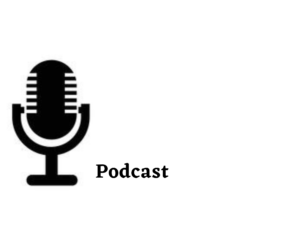
Join Dr. Rob Vanbergen:
The Fibro Summit online and free from May 16-22, 2022
Are you one of the 4 million Americans who live with the debilitating symptoms of Fibromyalgia? If so, you know just how difficult it can be to keep the chronic aches and pain at bay. Many people who have Fibromyalgia also have TMJ disorders, irritable bowel syndrome, tension headaches, anxiety, and depression, and it can seem that times of relief are few and far between.
While several prescription medications are available to help manage your symptoms, they often come with unwelcome side effects. Are you looking for a more natural way to ease your fibromyalgia pain? If so, keep reading – this blog post is for you! We’ll discuss some of the best Hache Protocol™ approved natural remedies for managing fibromyalgia pain. We hope that one or more of them will finally help provide the relief you deserve.
Fibromyalgia: A Confounding Chronic Pain Condition
Fibromyalgia is a condition that leaves the afflicted with chronic pain, fatigue, and brain fog. It is caused by a malfunction in how nerves send pain signals to the brain. This can result in widespread pain throughout the body, as well as extreme fatigue and difficulty concentrating or thinking clearly. Fibromyalgia can make it almost impossible to perform everyday tasks and significantly impact the quality of life. Luckily, remission is possible with the right treatment plan. If you suspect you may have Fibromyalgia, it is important to see a doctor for diagnosis and discuss treatment options before embarking upon any new health protocol.
Why Conventional Fibromyalgia Treatments Fail So Many
If you’ve been relying on conventional treatments for Fibromyalgia like antidepressants, anticonvulsants, and anti-anxiety medications, you know how hit and miss they can be. And when you factor in the costs of these treatments, it’s not uncommon to spend $10,000 or more per year just to manage your condition – and that’s just not fair.
Conventional medications can help some people lessen pain by affecting how your brain processes pain signals. But if you’ve read our blog before – you understand how detrimental it can be to block these critical pain signals as they only become more pronounced over time.
Some of the most common conventional treatments for Fibromyalgia include:
- Anticonvulsants. Gabapentin and Lyrica are two commonly prescribed anticonvulsants used to treat Fibromyalgia. While these medications can be useful for some patients, they often come with a host of side effects that make them difficult to tolerate. Ataxia, or unsteadiness and lack of coordination, is a common side effect of both gabapentin and Lyrica. Patients may also experience cognitive issues, such as memory loss and irritability while taking these medications. Additionally, muscle disruption, including weakness, twitching, and uncontrolled movements, is a common side effect. Finally, respiratory issues, such as congestion and difficulty breathing, can also occur.
- Pain Medications. There are a few different pain medications that your doctor may prescribe or suggest for you to take. These include opioids, non-steroidal anti-inflammatory drugs (NSAIDs), and muscle relaxants. The issue with many of these medications is that they can become less effective over time, and they can also be damaging to your organs with long-term use. Opioids, in particular, carry a risk of addiction, and after a while, you either have to up the dose or stop taking them.
- Antidepressants. Mood stabilizing drugs like antidepressants are commonly prescribed for people with chronic pain conditions like Fibromyalgia, and many patients do find them helpful. However, it’s important to be aware that antidepressants can also cause serious side effects, including liver damage, increased pain, flu-like symptoms, and even psychosis. In some cases, people had to go to the emergency room or have experienced severe withdrawal symptoms when they stopped taking antidepressants. If you’re considering an antidepressant for Fibromyalgia, talk to your doctor about the potential risks and benefits. You may also want to consider other treatment options, like microcurrent stimulation of the cranial nerves.
Biofeedback Therapy
Biofeedback therapy uses special equipment to monitor brain activity in response to specific events and situations. This can help people become more aware of their pain triggers, and it sheds some light on changes that you can make to control it.
According to NCCIH, this method has helped some people with Fibromyalgia, but they note that there is currently inadequate evidence to confirm its effectiveness. However, many people who have tried biofeedback therapy have found it to help manage their symptoms.
Massage Therapy

One of the most popular treatments for Fibromyalgia is massage therapy. Massage therapy involves the gentle manipulation of the body to reduce stress, promote relaxation, increase range of motion, and relieve pain. In fact, a2014 systematic review found that 5 weeks of massage therapy contributed to significant improvements in anxiety, depression, and pain in people with Fibromyalgia.
Gentle Exercise

Exercising with Fibromyalgia can be difficult. But hear us out because discomfort and pain should decrease as strength builds over time.
A 2007 systematic review found that regular aerobic exercise, including walking, swimming, or cycling, is likely to reduce pain, improve lifestyle, and facilitate better physical function in people with Fibromyalgia.
In addition to aerobic exercise, people with Fibromyalgia may also benefit from light strength training and stretching. These activities can help improve muscle strength, range of motion, and flexibility. As with aerobic exercise, it is essential to start slowly and gradually increase intensity and duration.
Stress Reduction

Studies have detected links between psychological distress and Fibromyalgia. People who experience high levels of stress may be more likely to develop the symptoms associated with this condition, according to recent research.
According to the CDC, the link between anxiety or depression and Fibromyalgia is especially strong for females, affecting twice as many women as men. Consider cognitive behavioral therapy (or CBT) as part of your stress reduction regimen. This type of therapy can help you stop ruminating on thoughts about your pain through exercises like writing down what you’re worried about. According to a recent study, online CBT could be helpful in the treatment of mild to moderate anxiety and depression in people with Fibromyalgia
Ways to reduce stress to ease fibromyalgia pain:
- Yoga and other gentle exercises
- Stretching
- Forest bathing
- Grounding yourself with microcurrent therapy
- Journaling
- Keeping in touch with loved ones
- Joining a support group, like our Pain Free For Life Support Group on Facebook
Microcurrent Therapy

Microcurrent therapy has been incredibly helpful in helping our fibromyalgia patients find relief from symptoms like chronic aches and pains, uncomfortable inflammation, and low energy and mood.
See what our patient, Tammy, had to say about using microcurrent therapy for her fibromyalgia pain:
“As someone with Fibromyalgia, I was absolutely blown away with my change in attitude, energy, and reduction in pain – how could something as simple as Grounding alter the body in such a drastic way? Living in a city, I think it really shows the impact of the environment on my health. I have continued to do this treatment daily while eating breakfast – it really makes me feel amazing!”
– Tammy B.
Additional Fibromyalgia Resources
Because fibromyalgia and chronic pain go hand-in-hand, we’ve covered this topic in depth. To help you better understand how you can treat the symptoms of this life-altering condition, please look over the following resources:

One of our most popular episodes on The Pain Free For Life Podcast has been on fibromyalgia relief.

The Hache Protocol for Pain Resolution™ was developed for people who are continuously unable to resolve their pain – and it’s equally effective in treating autoimmune illness. Learn the steps inside this information-filled Special Report.

At this Summit, you will learn to find and fix the underlying causes of your fibromyalgia symptoms so you can feel good again!
- The Fibro Summit, online and free from May 16-22, 2022
Sources cited:
Mind and body therapy for Fibromyalgia – PubMed (nih.gov)
Exercise for fibromyalgia | Cochrane
Fibromyalgia | Arthritis | CDC
Fibromyalgia: Can Online Cognitive Behavioral Therapy Help? – PMC (nih.gov)





